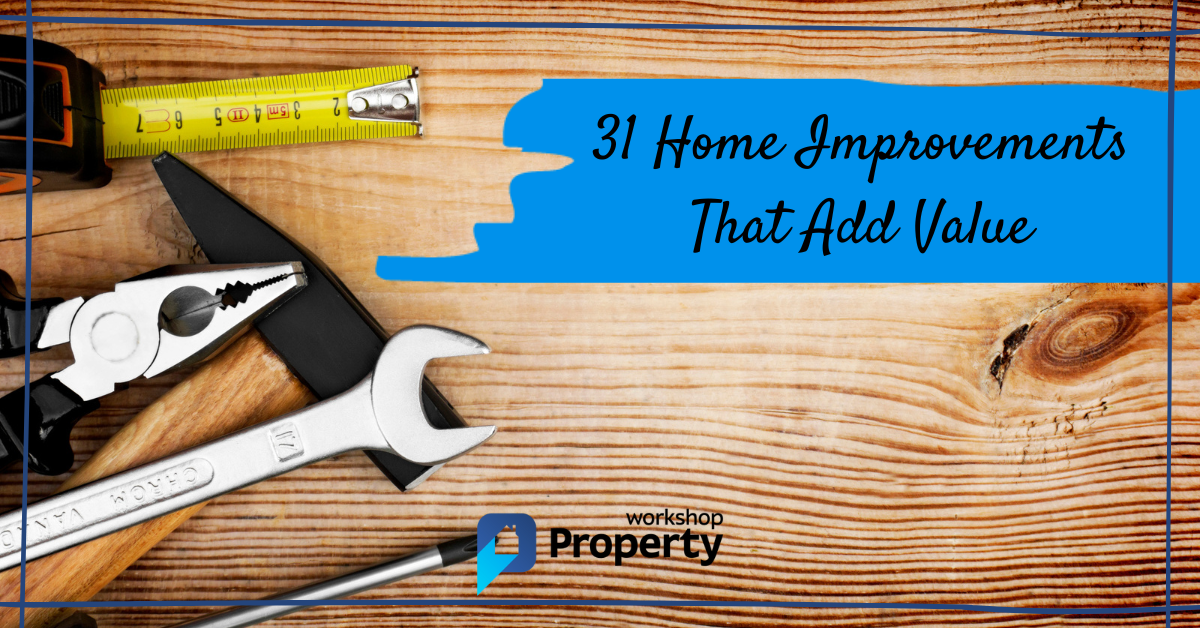Whether you’re renovating your home or looking to flip an investment property, this guide lists the top UK home improvements that add value, plus some that don’t. We also share tips on maximising your profit and making your money go further.
Prepare to be surprised by what does and doesn’t make our list for 2024…
Table of Contents
In a hurry? Below are the top 10 projects that add the most value:
Top 10 Home Improvements That Add Value
- New Kitchen
- Bathroom upgrades
- Double or triple-glazing windows
- Landscape garden and patio make-over
- Extra bedrooms
- Home extension
- Loft Conversion
- Solar Panels
- Upgrade central heating and improve energy efficiency
- Paint and Decorate
Avoid wasting time and money on projects that add little to no value, and follow our full list below:
Bring the Interior Up-to-Date
#1 Modernise Your Kitchen
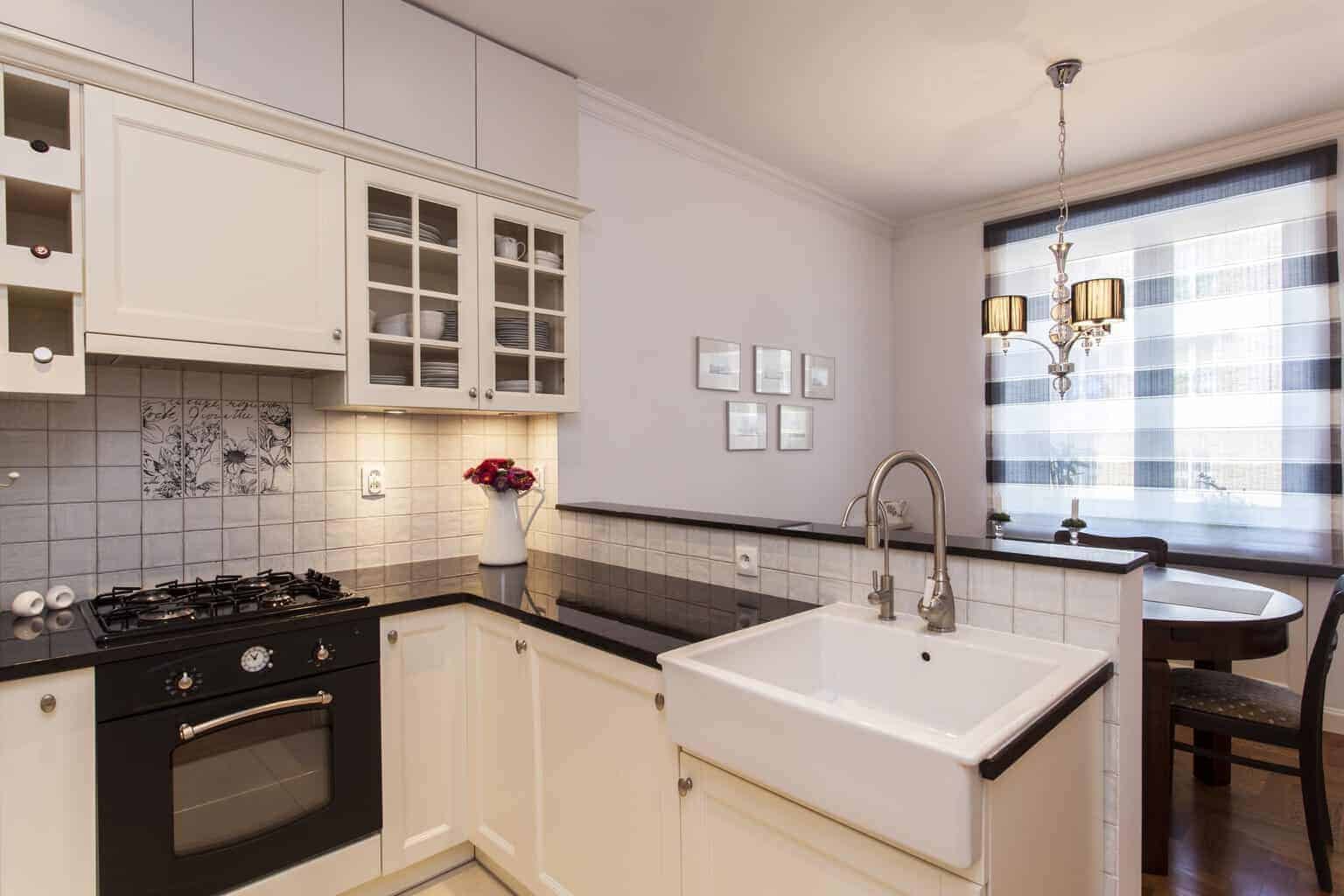
You’ve probably heard the saying that kitchens and bathrooms sell houses, and it’s true. An up-to-date modern kitchen is one of the best ways to add value to your home. After all, it‘s the hub of your home!
Updating a kitchen can be as simple as giving your cabinets a fresh coat of paint. Or, it can be much more complex and involve an entirely new kitchen and layout.
If you plan on buying a new kitchen, ensure the amount you spend on it is proportional to the value of your home. For example, a £800,000 home requires a higher spec kitchen than a property worth £250,000 (and vice-versa). Otherwise, you may forfeit adding any substantial value.
Elements for Added Value:
- Quartz and Marble — Luxury materials like quartz and marble worktops are extremely desirable in kitchens, as they’re durable and easy to maintain. Not to mention, they’re beautiful and make any kitchen look high-end.
- Modern Appliances — According to Country Living, buying new energy-efficient built-in appliances is the second most important contributor to the value of your kitchen.
#2 Update the Bathroom
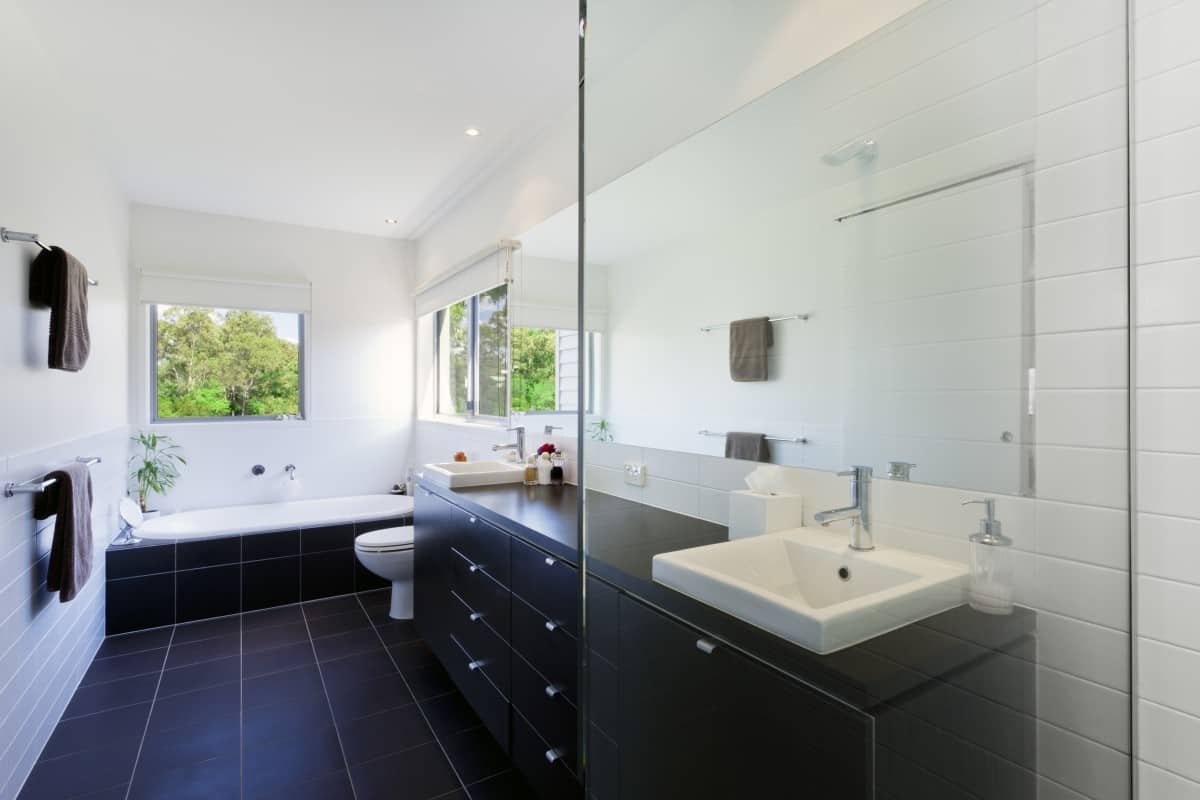
Years ago, bathrooms were rooms that only needed to be utilitarian. However, nowadays, people are looking for their bathrooms to be a luxury place to relax and unwind in an almost spa-like home experience. Modernising a bathroom to reflect this is a great way to add value.
A completely new bathroom suite isn’t always necessary, and you’d be surprised how different a shower can look with new hardware and tiles. However, ripping a whole suite out and starting afresh may also be beneficial, particularly if you want to change the room’s layout.
Elements for Added Value:
- Power Shower — These days, installing a power shower is essential, as nobody wants to step into a weak shower.
- Underfloor Heating — Ditching radiators and opting for underfloor heating is becoming increasingly popular in bathrooms. It gives you more wall space for a larger bath or shower and heats the room evenly. It also adds a luxurious element to the room. Who doesn’t want cosy toes after stepping out of a shower on a cold winter’s day?!
#3 New Flooring

Few floors last a lifetime. Even if your floor hasn’t worn out, it may look outdated. The days when carpets in bathrooms were desirable are long gone. Likewise, patterned carpets and lino tiles are no longer wanted.
Updating a floor can transform the look of a room, and it doesn’t have to be expensive — there are many easy DIY options if you’re on a budget.
Ensure you choose the right floor type for the room. For example, reception rooms should be durable and easy to maintain (e.g. tiles), whereas bedrooms should feel cosy and warm (e.g. carpet). Carpets are a smart choice for bedrooms to add a cosier, more homely feel.
Elements for Added Value:
- Wooden Floorboards — Bringing floorboards back to life in an older period property is a great way to add value without spending a fortune.
- Natural Stone — Natural stone, like limestone, is the only type of flooring that gets better as it ages. It adds character and can truly last a lifetime.
#4 Decorating
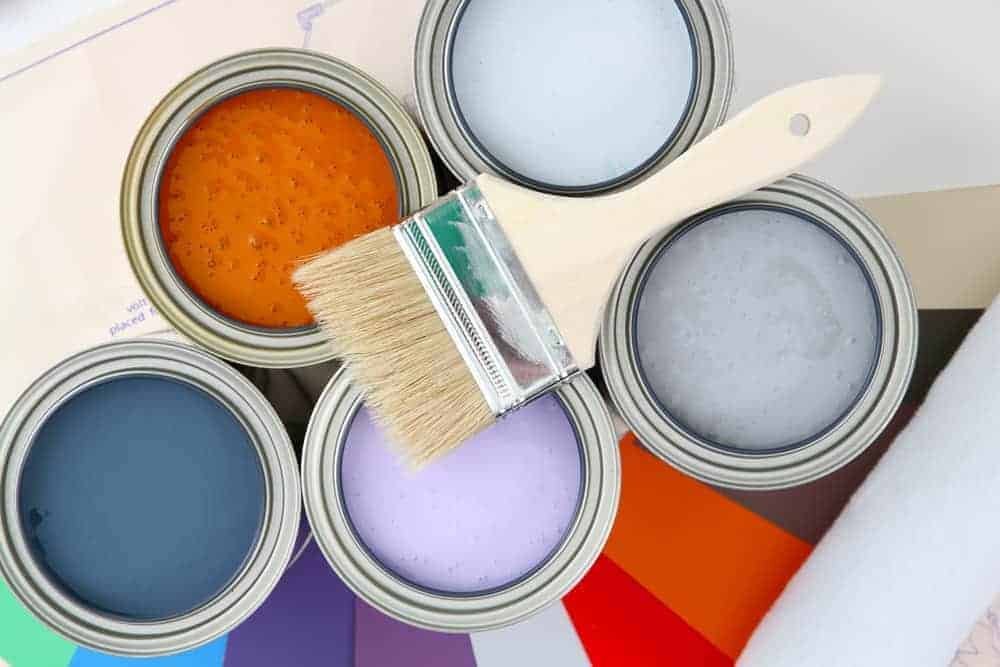
Damaged walls, ugly artex ceilings and outdated colour schemes can age and devalue your home. Replastering and painting a room with a fresh coat of emulsion can bring a house into the 21st century.
For small spaces, light-reflecting paints and mirrors are a great way to trick the eye into thinking a room is bigger.
Elements for Added Value:
- Stay Neutral — With trends ever-changing, if you’re looking to add value before selling, keep the decor neutral. This approach allows buyers to visualise your home as a blank canvas.
Pro Tip: Consider investing in a high-quality paint sprayer to speed up the painting process.
Sort Out Practical Issues
#5 Shower + Bath
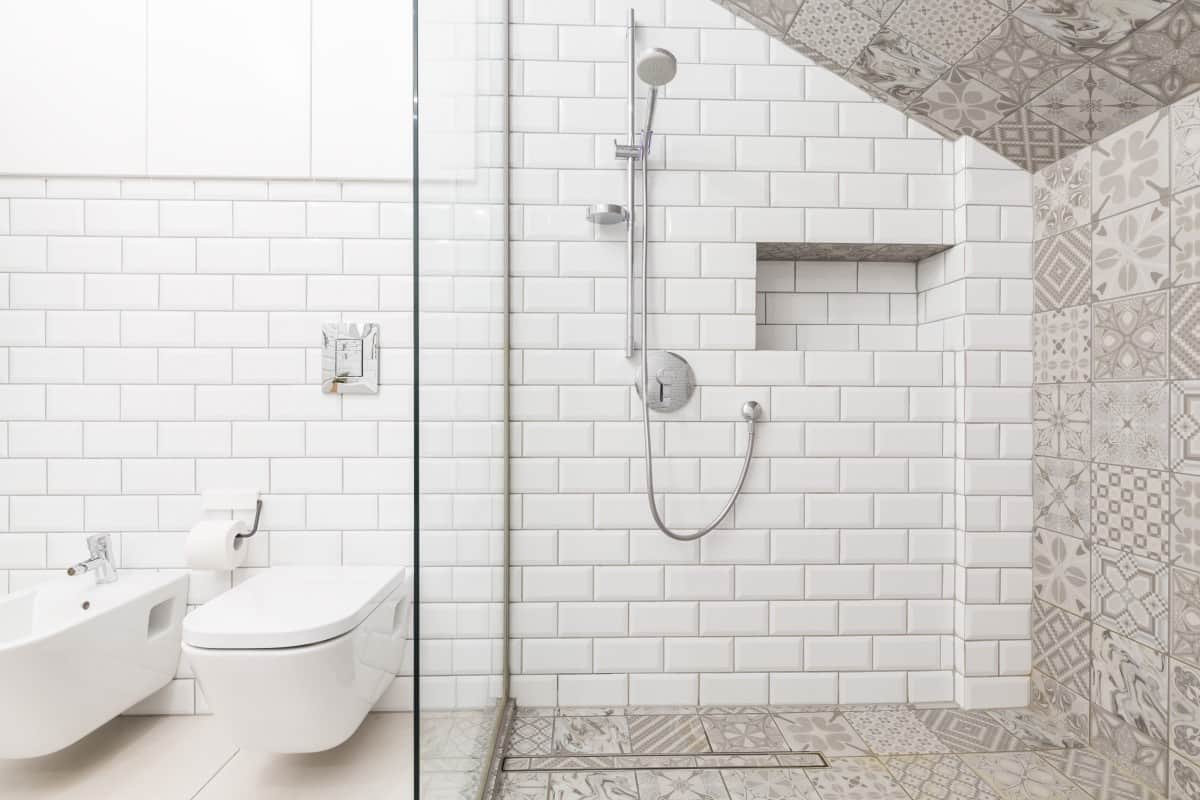
Having a shower and a bath means your property will appeal to everyone. Families, in particular, always need a bath for small children, yet the convenience of a shower is essential.
Installing a shower and a bath doesn’t necessarily mean you must add a separate shower enclosure. Ensuring your bath area is fully tiled (or has a shower curtain) with a fixed shower head solves this issue.
Elements for Added Value:
- Glass Screens — A glass screen around your bath looks more modern, is easier to clean and does a better job at preventing water from escaping than a shower curtain. Furthermore, it adds a more luxe vibe.
- Separate Enclosure — A separate enclosure is not essential, but if you have space to fit one, it does add more value.
#6 Upgrade Your Central Heating

Central heating systems are constantly being modernised and improved for efficiency.
If you don’t have central heating, this can severely damage your Energy Performance Certificate (EPC) rating. Likewise, an outdated boiler can devalue your property and turn off potential buyers.
Upgrading a boiler, particularly if it’s older than 15 years, or installing a whole new central heating system is not cheap. However, long-term, it can save you £100s on your heating bills (especially in today’s cost of living crisis) and add value to your property.
Hire a Gas Safety registered fitter to install your boiler and ensure he/she provides you with an updated gas safety certificate.
To add that extra finishing touch, consider boxing in your boiler and pipes to hide the unsightly mess.
Elements for Added Value:
- Smart Thermostats — Ensure your central heating is smart-ready, as it provides more options for programming and controlling your heating which helps reduce energy bills.
- A-Rated and Reliable Brands — Most modern boilers are A-rated, but some well-known brands claim to add more value than others. For more info, we recommend checking out this Which Guide.
- Period-Style Radiators — In period properties, cast iron and column radiators are highly desirable as they add irresistible charm.
#7 Adding Built-In Storage Space
Homes with excess space sell at a premium. But even if you don’t have oodles of space, making the most of what you have, particularly unused spaces, is a great way to add value.
Built-in storage avoids the need for bulky furniture and better uses awkward areas within your home. Alcoves are a great example. I.e. they don’t provide additional living space, so they’re perfect for turning into cupboards and wardrobes.
Even in the smallest properties, thinking outside the box can reveal many clever ways to add storage space. This could be a storage bench in a hall or pull-out drawers hidden under the eaves of an attic bedroom.
You only need to watch ‘George Clarke’s Amazing Spaces‘ to see what I mean!
Elements for Added Value:
- Wardrobes — Whilst there are many bespoke furniture companies, you don’t have to spend a fortune to get your perfect wardrobe. Some very clever IKEA hacks on the internet look beautiful and bespoke.
- Under the Stairs — If you have an open staircase with disused space underneath, boxing this in and installing a small door provides tons of storage space for things like coats, shoes and larger cleaning devices.
#8 Relocating a Bathroom
A downstairs bathroom is common in older properties, but unfortunately, it’s not always practical. Moving it upstairs frees up space downstairs and often improves your home’s layout.
It’s worth noting that relocating a bathroom is sometimes tricky, and the cost depends on the position of the soil stack and whether or not it needs repositioning.
If moving a bathroom means losing a bedroom, there’s some debate over its effectiveness. But you get the best of both worlds if you can split a bedroom into two.
Elements for Added Value:
- Smart Layouts — Bathtubs come in all shapes and sizes, from Corner to L-shaped baths. With smart planning, you’ll be surprised how easily you can squeeze a bathtub into the smallest of spaces.
#9 Fix Structural Defects

Structural defects are one of the most important factors affecting your home’s value. Defects can be as small as having a cracked lintel or as damaging as subsidence.
Sometimes, mortgage lenders won’t lend on properties with serious defects, so resolve these issues ASAP.
Elements for Added Value:
- Fix Damp Issues — Problems with dampness can prevent successful mortgage applications. Often, dampness is easy to fix and is caused by minor issues like a leaky pipe or the ground level sitting above a damp-proof course (DPC). These are all inexpensive issues to fix and can significantly affect a house’s value.
Be efficient!
#10 Improve Energy Efficiency
When selling your home, it will be examined for its energy efficiency and given a rating on an Energy Performance Certificate (EPC).
This rating indicates to prospective buyers whether the house is built to modern standards, suggesting how much the house will cost to heat compared to others.
You can make several alterations to improve your rating, such as adding insulation, switching to energy-efficient light bulbs, and, as mentioned previously, upgrading your boiler.
We recommend checking out the Energy Saving Trust’s EPC Guide for more information.
Elements for Added Value:
- Loft Insulation — Fitting extra loft insulation is cheap, easy to do and helps retain heat, meaning lower bills and an improved EPC. The minimum thickness recommended is 250mm. Note: You don’t need to remove the old stuff, simply lay the new insulation over the top.
- Energy-Saving Bulbs — Swapping to energy-saving bulbs is a small change that may improve your EPC. They’re cheaper to run, last longer, and barely cost more than a regular bulb.
#11 Adding Double or Triple Glazing
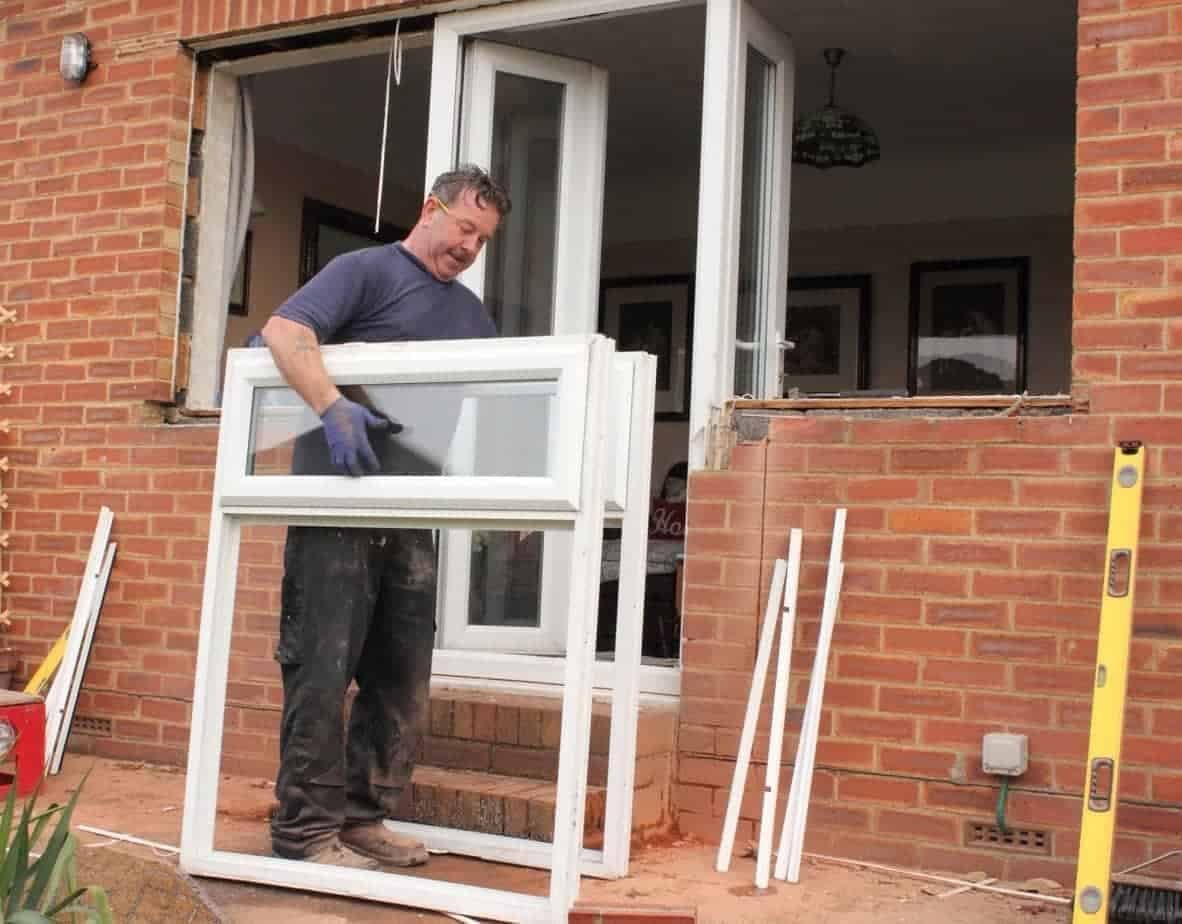
Your type of glazing is one of the most important factors in determining energy efficiency. Single-glazed windows are well known for their considerable heat loss, with some research suggesting that as many as 80% of UK homes are now double-glazed.
Double and triple glazing are more secure, easier to maintain, reduce heating bills and add value to your home. Most glazing is guaranteed to last at least 20 years, making it a worthwhile investment.
Note: Triple glazing costs around 30% more than double glazing but is twice as efficient.
Elements for Added Value:
- Aluminium — If you want to stand out from the street, aluminium framed windows are a growing trend in the UK. They’re much stronger and more secure than uPVC and give your home a modern edge.
- Sash Windows — If you have a period property, fitting sash windows adds more value to your home. The classic design of these windows adds charm, character and authenticity to any period property.
- Vinyl Windows — If you’re tight on a budget, vinyl windows might be your best option. According to the experts at Ecoline Windows, vinyl is a popular frame material for the following reasons:
- Cost-effectiveness. Unlike Wood or Aluminum, vinyl is 20–25% cheaper but still provides excellent durability.
- Energy-Efficiency. Vinyl is a natural thermal insulator that doesn’t transfer heat like metal. Vinyl windows, triple glazing and spacers significantly boost your home’s thermal performance.
- No frequent maintenance. Vinyl doesn’t require painting and won’t warp due to heat or moisture.
#12 Smart Home Technology
Smart home technology includes smart thermostats, doorbells, home security, light bulbs, etc. As new technology constantly develops and expands, the list is endless.
Installing smart tech is a great way to stay on-trend, improve efficiency (energy and productivity) and appeal to gadget lovers, including me!
For more info on the latest trends in smart home technology, check out Curry’s smart home buying guides.
Elements for Added Value:
- Home Security — Burglar alarms are now a thing of the past as smart security is taking over. For example, remote access CCTV is a good investment in more ways than one.
#13 Solar Panels

Who doesn’t want to generate their home’s power and have it pay for itself while also helping combat climate change? It’s a win-win-win!
However, solar panels are still expensive to buy, costing upwards of £5,000, so run the numbers to see if it’s worthwhile. Furthermore, as technology frequently improves, it’s difficult to know the best time to buy as researchers discover better solar solutions.
According to The Eco Experts, homebuyers are more likely to spend extra on homes with solar panels as they benefit from lower energy bills.
Pro Tip: To gain the most from your solar panels, you must keep them for at least 5 years.
#14 Underfloor Heating
There are two types of underfloor heating; those powered by electricity and those heated via water pipes. Each has pros and cons, but both are effective ways to heat the floor beneath your feet.
Underfloor heating is a fast-growing market that adds luxury and practicality to your home. Moreover, it attracts homebuyers, especially those at the higher end of the market.
Elements for Added Value:
- Kitchens and Bathrooms — These two rooms are great locations for underfloor heating as they’re usually tiled surfaces that otherwise feel cold to walk on.
Stand Out From the Street
#15 Window Shutters
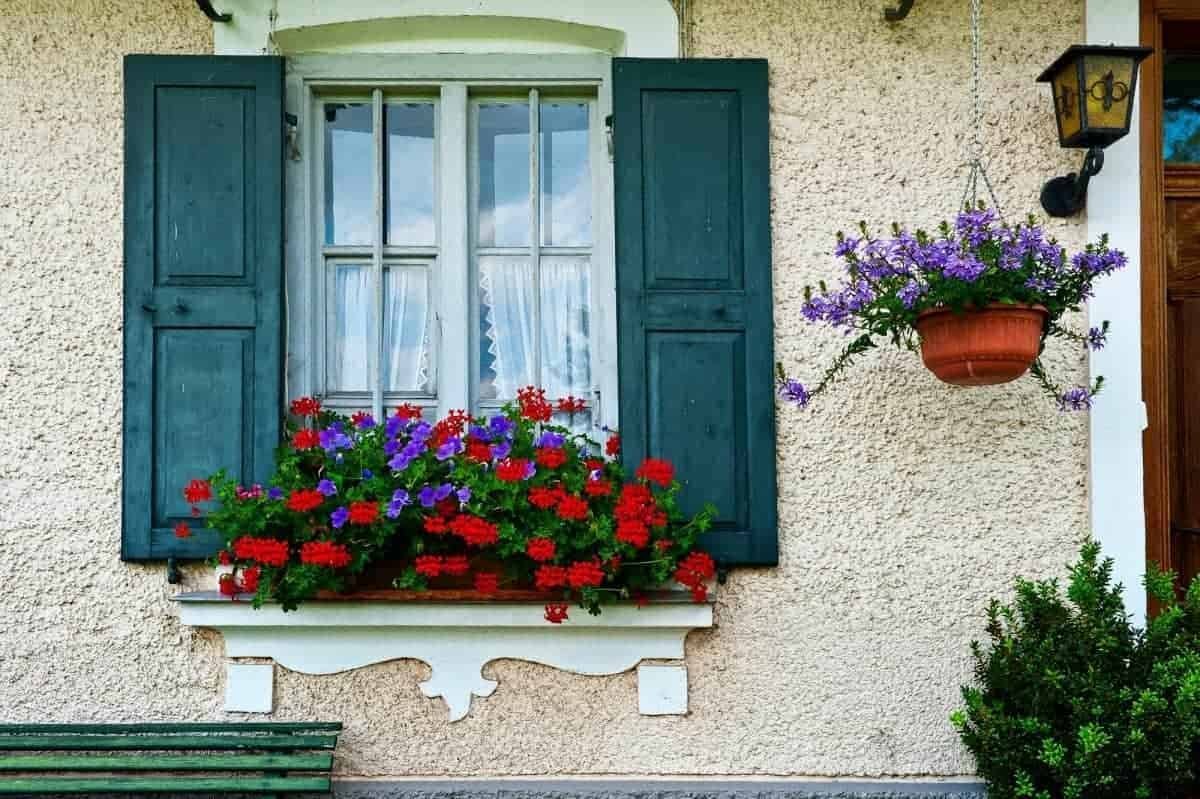
Window shutters are the only window dressing that adds value to your home. Perhaps it’s their elegance or because they provide privacy while allowing light into your home. Either way, you’ll find them on many people’s wish lists.
Whilst they’re fairly expensive for a window dressing, you can get DIY-installed shutters which are much cheaper. You can also opt for half-height shutters, known as ‘cafe-style‘, to keep costs down.
Elements for Added Value:
- Front of House — If you can only afford to install window shutters on one side of your house, make it your front room. This way, your house will stand out from the street and attract potential buyers.
#16 Reinstall Period Features
In the 50s, 60s and 70s, period features were a huge turnoff, with many homeowners ripping them out. Nowadays, these features are back in fashion and highly desirable.
If your house was stripped of its original period features, putting them back (whether it’s using reclaimed or reproduced pieces) increases your home’s value.
This restoration may involve installing period doors, fireplaces, cornices and radiators. The more you can restore, the more attractive your home to those who appreciate period properties.
Elements for Added Value:
- Fireplaces — Even if all other period features are lost, installing a classic fireplace is a great way to add character to your home.
- Cornice and Ceiling Roses — These decorations add elegance, style and grandeur to a room.
#17 Add Kerb Appeal
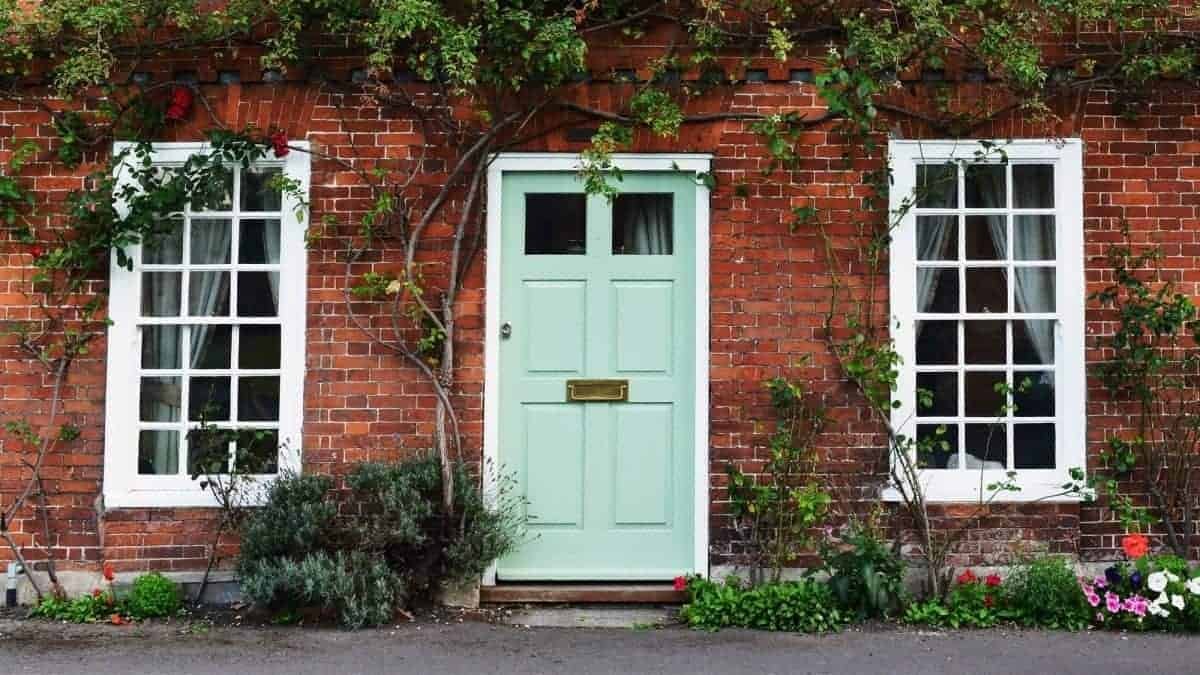
First impressions matter. If your house is lacking in this department, consider modernising and giving it some oomph. You can achieve this by painting, landscaping, adding cladding, etc.
Turning an ugly house into an attractive one is a home improvement that gets buyers through the door and adds substantial value.
Elements for Added Value:
- Outdoor Lighting — Lighting can be practical and attractive. With the UK being well known for its gloomy weather, it’s a great way to brighten up your home and deter potential burglars.
#18 Create Off-Road Parking
Almost every household in the UK has at least one car, so having a nearby parking spot is essential, especially for families and the disabled.
If you have space, dropping the kerb and landscaping the front to allow room for at least one car is a sure way to add value.
You’ll need approval from your local council, and prices vary between £0 to £300, not including landscaping, gravel or driveway blocks. However, it adds thousands to home value and is a dealbreaker for many potential buyers.
Elements for Added Value:
- Gravel — To save money, gravelling a driveway is a great way to go. It’s cheap, easy to do and looks good.
#19 Install a Log Burner
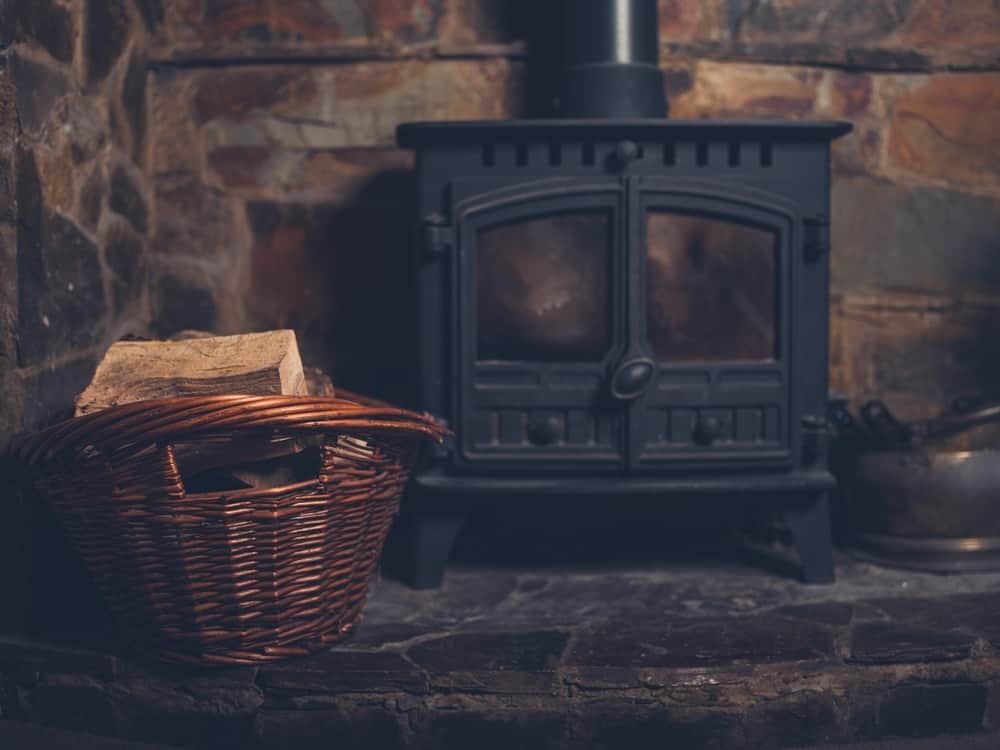
Over the last decade, log burners and multi-fuel stoves have grown massively in popularity, with some stores claiming sales have increased by as much as 60%.
Log burners and multi-fuel stoves are safer than open fires and produce more heat. Moreover, using a log burner means spending less on your heating bill, especially if you have a free wood supply.
Convert, Convert, Convert
#20 Loft Conversion
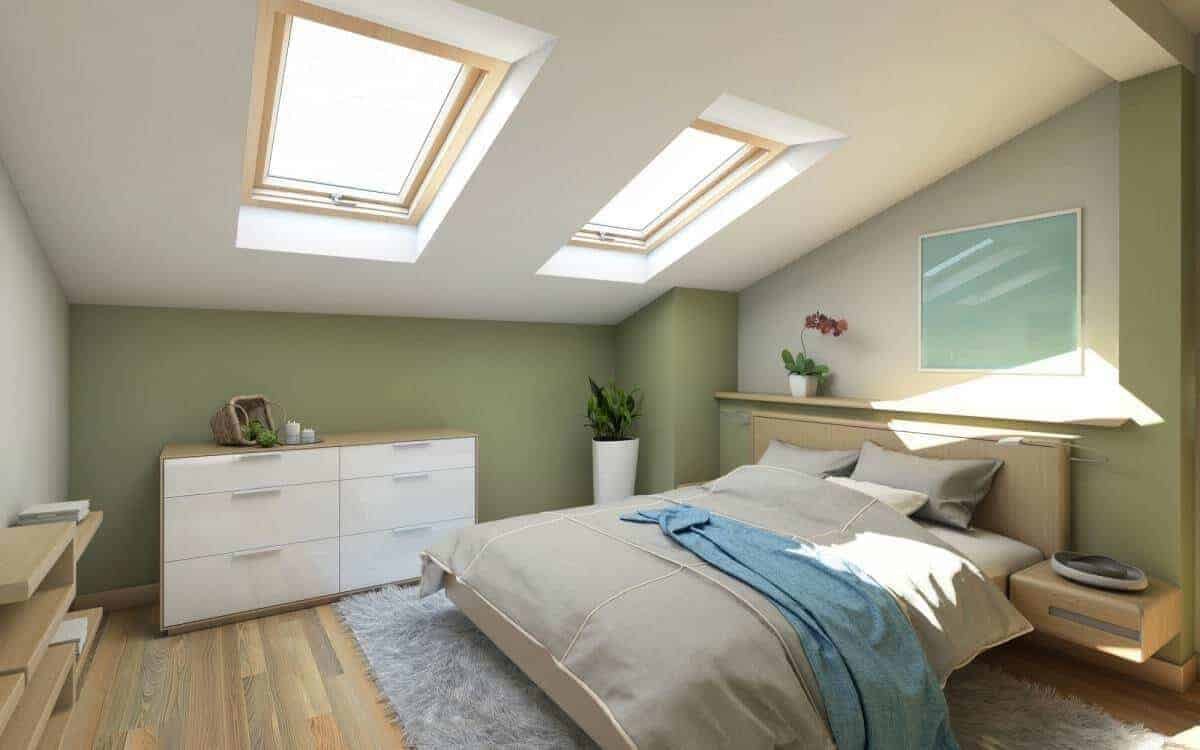
Converting an attic is a great way to add an extra floor to your home, and according to the Guardian, an attic conversion can add 20% to the value of your home.
The size of your attic and whether there are any height restrictions will determine if a conversion is possible. These factors also determine the required work and overall cost.
However, an attic conversion is not for the faint-hearted, as it’s invasive, destructive, and time-consuming. But if bedroom space is lacking, there’s no better way to add more room.
Elements for Added Value:
- Extra Bathroom — Converting the attic to become a master suite, complete with an en-suite, is a great way to add value. The Guardian suggests that adding a second bathroom may add up to £10,000!
#21 Convert Basement/Cellar Space
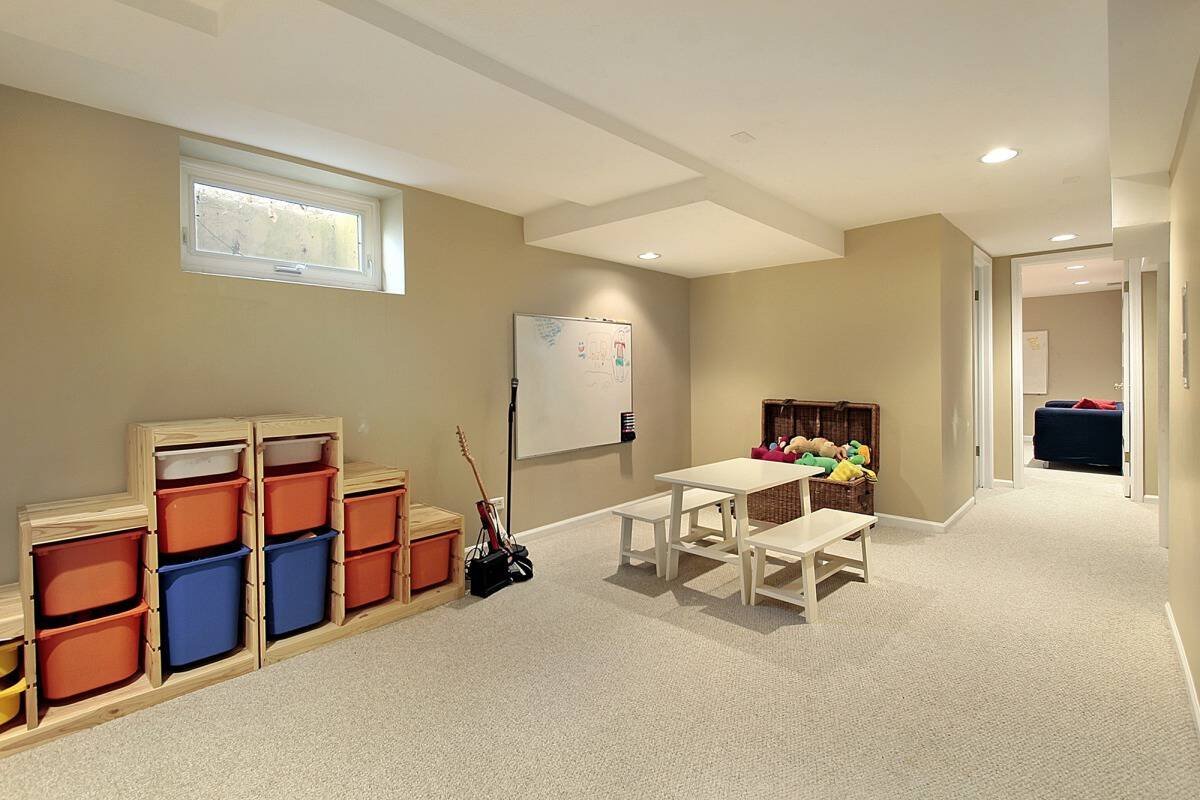
If you own a period property, you might have space underneath your house in the form of an old cellar.
Before the fridge was invented, these spaces were used to store raw meat. Nowadays, they often sit underneath houses as disused rooms or storage spaces.
Renovating a cellar is no easy feat, as you’ll have to fit a fire escape and deal with dampness. You may also need to lower the floor level. The expense varies from cellar to cellar, but if you have one, it often makes sense to renovate it, especially in areas like London, where space is at a premium.
Elements for Added Value:
- Basement Kitchens — Moving your kitchen and living space into the basement while simultaneously digging externally to lower the garden leaves you with an entire floor to convert into bedrooms.
#22 Convert a Garage
Garages are great for tool storage and sheltering cars, but if you don’t use them properly, garages can become dumping grounds.
Turning an unused garage into a home office is a great way to add extra living space, and Virgin Money suggests it adds 20% to your home’s value. Furthermore, it’s one of the easiest conversions to do since it requires little structural work.
Alter the Internal Space
#23 Extend
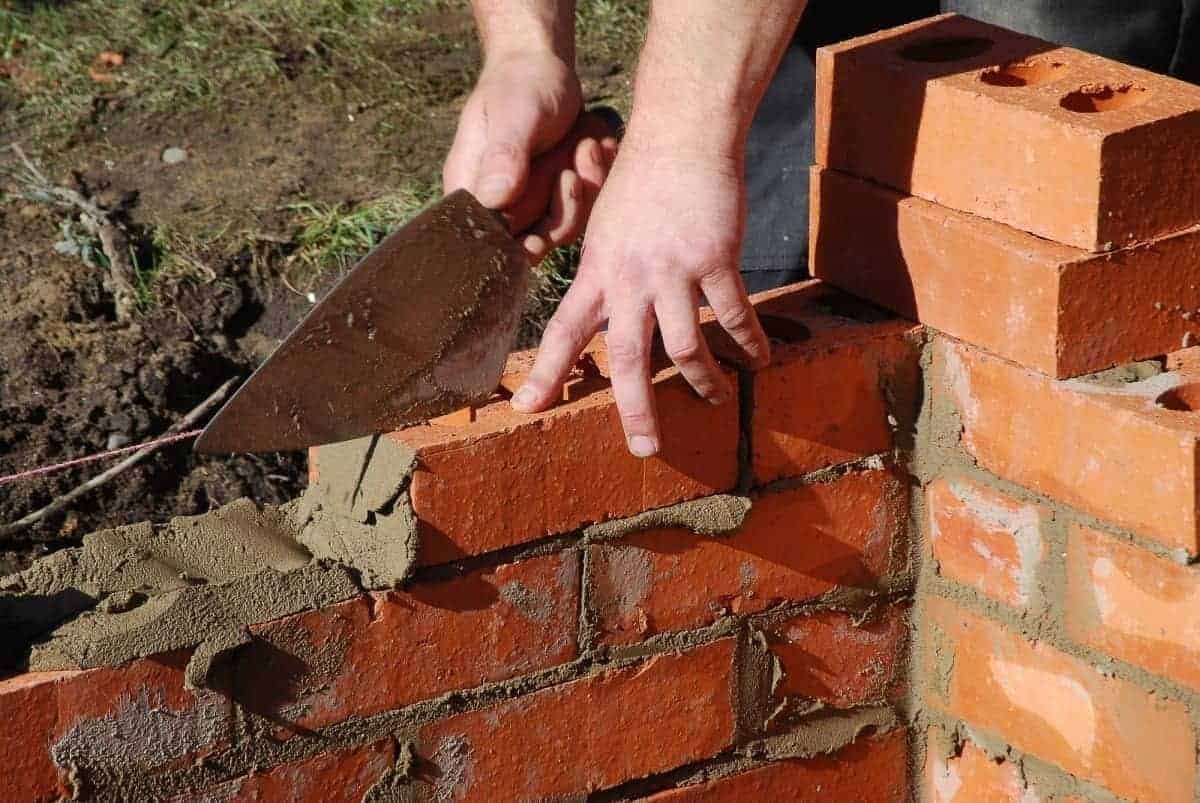
If you can’t convert, extending your home is a great way to add more living space to your property.
Homes and Property say, on average, a medium-sized extension can add almost £60,000 to your house price. However, you can expect a bigger number for areas such as London and the South East, where space is at a premium.
Elements for Added Value:
- Bathrooms — Extra bathrooms in large properties are a good way to add value.
- Bedrooms — The more bedrooms, the higher the value of your property.
#24 Add a Conservatory
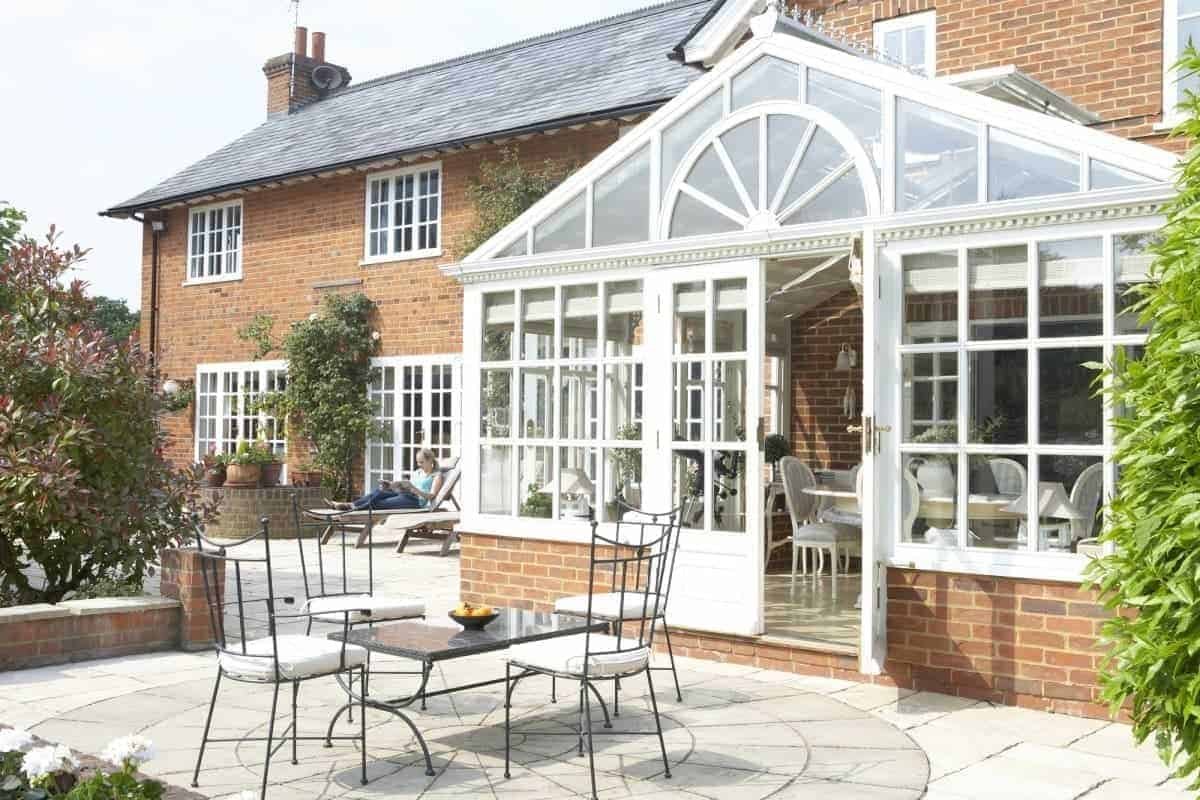
Conservatories are a relatively inexpensive way to add a ground floor extension. Furthermore, they rarely require planning permission, and pre-fabricated designs mean quick installation and less labour.
You must carefully think about the design of your conservatory, especially when it comes to heat retention. If you do it right, a conservatory can add up to 7% to your home’s market value.
#25 Remove Internal Walls
Knocking down walls is a good way to open up internal space and make your house appear bigger. Whilst you may lose a room, you’ll gain light and space, and it often improves your home’s layout.
The cost of removing a wall depends on its size and whether it’s load-bearing. For more info, check out our wall removal cost guide.
Elements for Added Value:
- Open Plan Kitchen — Knocking down a wall between a kitchen and dining room is one of the most effective walls to remove, as it creates more open living space for a bigger, better and more sociable room.
#26 Add More Natural Light
They say lighting can make or break a room, and it’s true.
Adding extra windows makes a room brighter and feel bigger. Roof windows and sun tunnels are a great way to achieve this feeling.
#27 Apply for Planning Permission
Even if you can’t complete the project, having planning permission increases your home’s value, as a new buyer won’t need to go through the arduous planning process. It also removes the risk of buying a house and having planning rejected later down the line.
It may only be a piece of paper, but it’s pure gold to the right buyer!
#28 Add an En Suite

En suites sell properties, and Bathrooms.com says having an en suite can add nearly 5% to your home’s value.
As mentioned, bathtubs and shower cubicles of all shapes and sizes make fitting en-suites much easier. With the help of a saniflo system, you can install an en suite almost anywhere.
Make the Most of Outdoor Space
#29 Bring the Outdoors In
Opting for large opening doors, such as bi-folds, sliding doors, or French doors, is a wonderful way to bring the outdoor space inside.
Connecting indoor and outdoor spaces makes rooms feel more spacious and brighter and allows access to the garden for indoor-outdoor living. Large opening doors also add style, acting as a ‘picture frame’ for the garden.
Elements for Added Value:
- Bi-folding Doors — Increasingly popular, bi-folding doors are desirable because they fully open up an indoor space into the outside. They’re pricer than standard French doors but make an impression that lasts.
#30 Build a Summer House or Garden Room
Building a summer house or garden room is an excellent way to add more space for a home office, gym or relaxing sunroom without going through the tedious and often expensive planning permission process*.
*Note: Most summer houses and garden rooms don’t require planning permission, provided they fit within these rules. Also, building a garden room involves much more work and money than building a summer house. To understand the differences between the two structures, check out this article from The Garden Room Guide.
To learn more, check out Ali Dymock’s fantastic video series on how to build a garden room. To get you started, here’s his first video:

#31 Landscaping
If your outside space is a sea of semi-dead grass and not much else, it’s not being used to its full potential.
Landscaping doesn’t have to be elaborate. Simply providing an outdoor living area, like a patio with some easy-to-maintain greenery, elevates your home and well-being.
Elements for Added Value:
- Patio or Decking — We don’t get many sunny days in the UK, so there must be space to enjoy it when we do. Furthermore, a backyard with a beautiful deck to enjoy barbecues and fire pits with family is much more appealing to buyers.
- Mature Greenery — Gardeners love mature plants because they’re well-established and bring more buds to their garden. Some people pay crazy prices to plant mature trees in their gardens, so if you already have them, you’re onto a winner! If not, get planting.
7 Home Improvements that Do NOT Add Value
We’ve gone through 31 ways you can add value to your home, looking at big and small projects.
But what about home improvements that don’t add value? Fortunately, we have a list for that too. So here are 7 home improvements to avoid.
#1 Expensive Wallpaper and Luxury Paints
While expensive flooring can yield a good return, things like paint and wallpaper won’t. Once the paint is on the walls, nobody will ever know it’s from a luxury tin.
Likewise, a feature wall worth £200 in wallpaper won’t pay you back.
#2 Losing a Bedroom
When space is minimal and spare bedrooms aren’t necessary for day-to-day use, it’s tempting to repurpose them. This might be for a second bathroom or extending another room.
Losing a bedroom, however, can damage your home’s value. Having a 4-bed house with 1 bathroom is much better than a 3-bed house with 2. The number of bedrooms matters, even if they’re small!
#3 Adding a Swimming Pool
Swimming pools can put buyers off because they’re expensive to heat and maintain. Furthermore, they rarely get enough use to justify the initial outlay.
Swimming pools are great on hot summer days, but if you want to make alterations that add value, we recommend staying clear.
#4 Losing a Reception Room for a Garage
Garage extensions typically add value, but turning part of your house into a garage can have a negative impact. For example, losing your dining room in favour of a garage may damage your home’s value.
Living space always comes first to buyers, so sacrificing a room for a garage often means a lower house valuation.
#5 Luxury Landscaping
Regular landscaping adds value (see point #31 above). However, paying a premium for mature greenery won’t. Some trees, for example, can cost hundreds of pounds.
Planting several of these trees may look nice, but they won’t add much value.
#6 Creating Spaces that Don’t Work
We’ve all seen home renovations that didn’t work, leaving us in disbelief. Some of the worst offenders are added bathrooms that are too small to fit into and narrow kitchens where you can’t open more than one cupboard at a time.
Any extension or major renovation should be carefully thought out. When in doubt, hire an experienced architect to help plan your project.
#7 Over-Improving
Despite all the suggestions above, some houses on certain streets won’t gain extra value, no matter how many improvements you make. Why? Because there’s a limit on what people will pay for a house on a given street.
Therefore, it’s important to know the value of your street and whether there’s a ceiling price for your neighbourhood. You should gain inspiration from neighbours about what they’ve done and ensure your budgets align with your home’s potential value. Speaking with an estate agent who knows the area can also help.
Final Thoughts
We hope this list has given you some inspiration, ideas and confidence to know what home improvements are right (and wrong) for your property.
For more information about renovating your property, check out our guide to projects you can do without planning permission.

